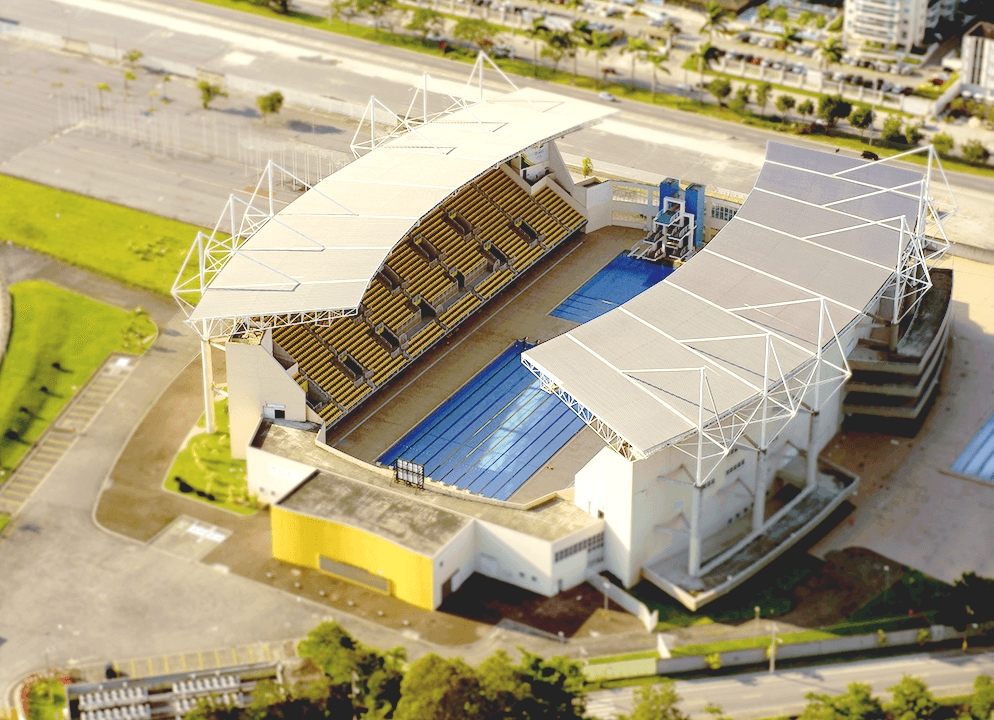Who: 104 athletes from 24 countries in two events
What: Team and Duet events
Where: Maria Lenk Aquatics Centre
When: Days 9-11 (duet) and Days 13-14 (team)
First introduced at the Los Angeles Olympics in 1984, synchronised swimming will be returning for the eighth time this year in Rio.
Synchronised swimming combines; gymnastics, dance, choreography, rhythmic movement and incredible strength and endurance, all performed in sequential synchronicity within a swimming pool.
In competition the make-up and hairstyles of synchronised swimmers are highly regulated, whilst they are also full body wear in swimming costumes and nose clips.
Through participating, athletes complete a sequence of choreographed movements both above and below the water to a music track of their choice.
Competitors are scored in this discipline across a wide range of criteria including execution and synchronicity.
Within the duet and team categories synchronised swimming athletes compete two different routines; a technical and a free routine.
Duets compete in two phases of competition, the first being a preliminary round which narrows the competition to twelve pairs.
In the preliminary round the duets firstly perform their technical routine where they are given 2 minutes and 20 seconds to execute eight elements.
Following the technical routine each duet performs their free routine which consists of a three and a half minute routine which is choreographed by each country with no restrictions on movement elements.
In the final round, duets compete their free routine again to which they receive a final score and ranking.
The team competition runs in the same order, however it has only one round.
In their technical routines, teams must execute a total of nine elements within 2 minutes and 50 seconds, whilst in their free routines the time limit is four minutes.
The concept of synchronised swimming was first introduced in the late 19th century where it was performed by men. Over time the sport drifted into female dominance as a result of the lighter female frame having the ability to perform more intricate manoeuvres.
Russia has been a dominant force in the sport taking home every available gold medal since Sydney 2000. This year they will have athlete, Svetlana Romashina returning for her third games aged just 26-years-old.
Australia will have both a team and a duet competing in this year’s Olympic Games, with WA well represented across both competitions.
Danielle Kettlewell, Amie Thompson, Deborah Tsai and Rose Stackpole will all make their Olympic debut in Brazil, with Stackpole also competing in the duet for Australia.
If you have not yet experienced the dazzling displays of synchronized swimming, then mark this event in your Rio calendar. The Australian girls will not let you down in pride or performance.
To follow WA’s Synchronised Swimmers in Rio, view their bios below, including information on when they are in action in Brazil.


